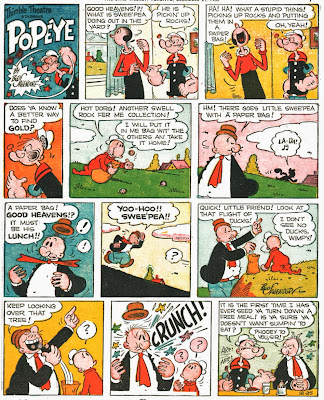Friday Comic Book Day.
If Marvel is ever going to reprint some of their older western books, they will (and should) start with Jack Kirby's work in the late fifties and early sixties in the genre. But allthough the stories were lightweight (often written by Stan Lee himself) a lot of capable artists worked on them, from John Severin and George Tuska to Gene Colan, Al Williamson, Doug Wildey, Ross Andru and even Jack Davis. Davis joined the company as a free-lancer towards the summer of 958, when Stan Lee was slowly rebuilding it from the 1957 distribution debacle we have come to know as The Atlas Implosion. Eventhough Jack Kirby has repeated many times the story that Stan Lee was putting all his stuff in boxes when he came in to save them with his monster books (and two years later the superheroes), Tom Lammers has shown in his excellent book Tales of the Atlas Implosion, that Lee and owner Goodman had been rebuilding slowly from late 1957 onwards. In fact, the first 'new' titles started to appear as soon as two months after the collapse of their distributor (which forced them to make a deal with competitor DC owned distributor National and drasticly lower the number of books they brought out). Jack Kirby didn't come in until June or July, the precise date of which is still a hot debate among Timely/Atlas scholars (which is to say, most don't buy my theory that Kirby came in the week Atlas workhorse Joe Maneely died to see if there was work to be had). Using the job numbers and ledgers of artists such as Dick Ayers to determine the rough sequence of events but not to the day.
Although... top Timely Atlas expert Michaeel Vassello (check out his Timely Atlas essayblog) has almost proven that the last piece of art that was on Joe Maneely's table on the day he died might have been the second Two Gun Kid story for Two Gun Kid #45. The job number is T-067 and that in itself makes it one of the last things he did. Furthermore, Maneely only did the splash page and he rst of the story was finished by Jack Davis, who also did the first story of the book - which, judging by the job number was only written after that. The only other candidate for Joe maneely's last job seems to be the illustation which was used a the cover of Two Gun Kid #49. The story that goes with it, was ritten a lot later (judging by the job number) and drawn by John Severin. It all depend on which one you think Joe Maneely would have done first. If he even did that cover on that day. It looks as if Stan slapped on a title and wrote the story after that, so the drawing could have been done any time.
Joe maneely died by falling between two metro trins on the way home. For a long time it was silently thought by many that a night of drinking with the friends was the cause of it, sometimes even leading to rumors of alcoholism. Stan Goldberg recently came out with the forgotten story that Joe maneely didn't have his glasses that day, which is much more likely to have been the cause of the accident. Which means that he must have drawn these pages without his glasses, so he must have been farsighted...































































